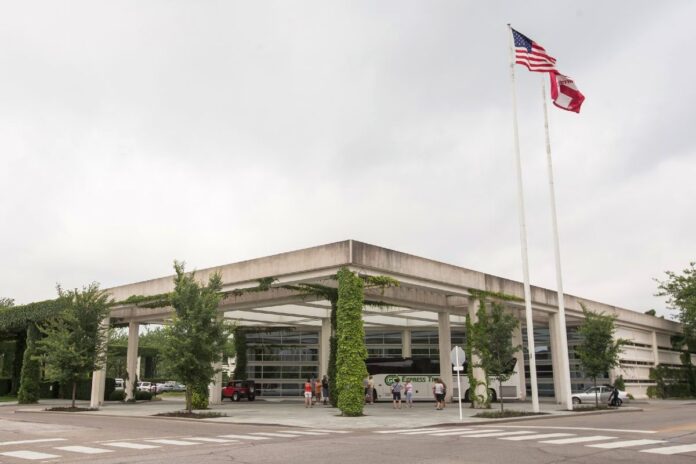
The memory of a nationally known landscape architect who died earlier this month will live on in his major projects in Columbus.
John “Jack” Curtis, 77, died May 2 of COVID-19 complications in Easton, Connecticut, near where he led his firm of Jack Curtis + Associates for more than three decades, according to the obituary the family posted on the website of Spear Miller Funeral Home in Fairfield, Connecticut.
In Columbus, Curtis is best-known for the heralded surroundings of Cummins Inc.’s corporate office building downtown and the park-like setting he created in 1984.
The project won an Honor Award from the American Society of Landscape Architects. The space features glory maple, sugar maple, Boston ivy, birch, redbud, and dogwood trees, according to detail on the website for the Columbus Area Visitors Center. Also noted is the climbing hydrangea blooming on the columns surrounding the building.
[sc:text-divider text-divider-title=”Story continues below gallery” ]
“He really loved Columbus,” said wife Dorothy “Dolly” Curtis, speaking by phone near her home in Easton, Connecticut. “He saw it as an honor to work there because of all the well-known architects who’ve also worked there.”
She added that he held a special fondness and respect for late architectural enthusiasts, friends and clients J. Irwin and Xenia Miller, whom he completed work for at their home.
Though Curtis designed landscapes for major, national clients ranging from the Metropolitan Museum of Art in New York City to the General Foods World Headquarters in Rye Brook, New York, his wife and others mentioned that he never sought the spotlight.
“He never cared about any fanfare,” his wife said.
Landscape architect Meg Storrow of Storrow Kinsella Associates in Indianapolis worked for Curtis for a decade in Connecticut. She served as project manager for site development at Cummins corporate office building.
She refers to him as “a very strong mentor” who was as gifted with his vulnerability, generosity and personal concern as a boss as he was gifted with creativity as a landscape architect. He and his wife regularly took Storrow to art shows and similar opportunities in New York City.
“For me, that was very impactful,” Storrow said. “It showed that I was more than an employee to Jack, and that was very nice. So, on a personal level, he meant an awful lot to me as well.”
In the 1980s, when Storrow’s mom battled cancer, Curtis adjusted Storrow’s schedule so she could regularly take some Fridays off to be with her mother long before most firms introduced flextime.
On the professional front, besides Cummins’ corporate headquarters, Curtis also designed the landscape at the Cummins Technical Center, Cummins Fuel System Plan, Cummins Engine Plant One, Cummins Child Development Center, Columbus Area Visitors Center, and Irwin Gardens restorations.
Columbus resident Jeff Baker, a longtime friend of Curtis, is reminded of the landscape specialist’s eye for beauty every time he glances down the street where he lives locally.
“Besides everything else Jack did in Columbus was his choosing the green vase zelkova trees for Fifth Street (in the late 1980s), which are much loved by so many people,” Baker said.
Curtis also worked on the local downtown Streetscape project in the late 1980s.
Curtis’ 50-year career began in the mid-1960s. He later formed Landplan Partnership in Southport, Connecticut, with two colleagues in 1970s and served as a principal for 12 years. He then launched his own firm, Jack Curtis + Associates, in Monroe, Connecticut as a sole proprietor. He retired in 2015.
The Virginia native graduated from Penn State University with a bachelor’s degree in landscape architecture in 1966.
Among his numerous honors, his designation as a Fellow by the American Society of Landscape Architects in 2000 was the proudest moment of his professional life, and a pinnacle achievement in his profession, according to his family.
“People sometimes take landscape architecture for granted,” Storrow said. “They look at something and just assume that that’s the way it should be because it just seems right.
“People assume that someone did that work (with a landscape), but that it wasn’t really planned — that it just kind of happened.”
Storrow said the low-key Curtis saw that as a kind of invisibility that he found comfortable in Columbus marked by high-profile builders and designers. But she and others in the architectural landscape field understand his visibility among design stalwarts and design lovers.
“He certainly was highly regarded by the Miller family,” Storrow said, adding that he worked for them on various projects for perhaps 20-plus years. “And they had the ability to choose absolutely anyone they wanted.”




